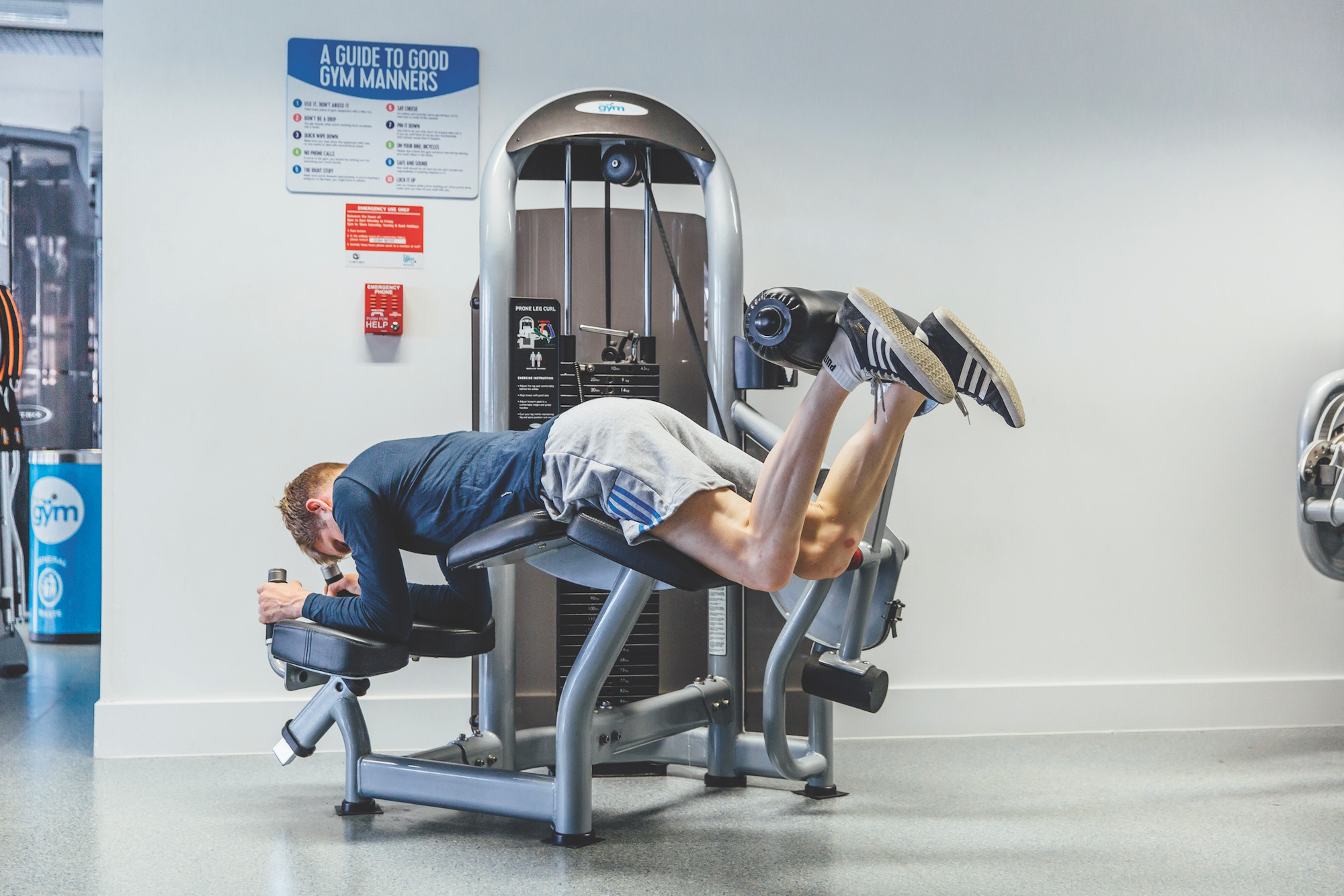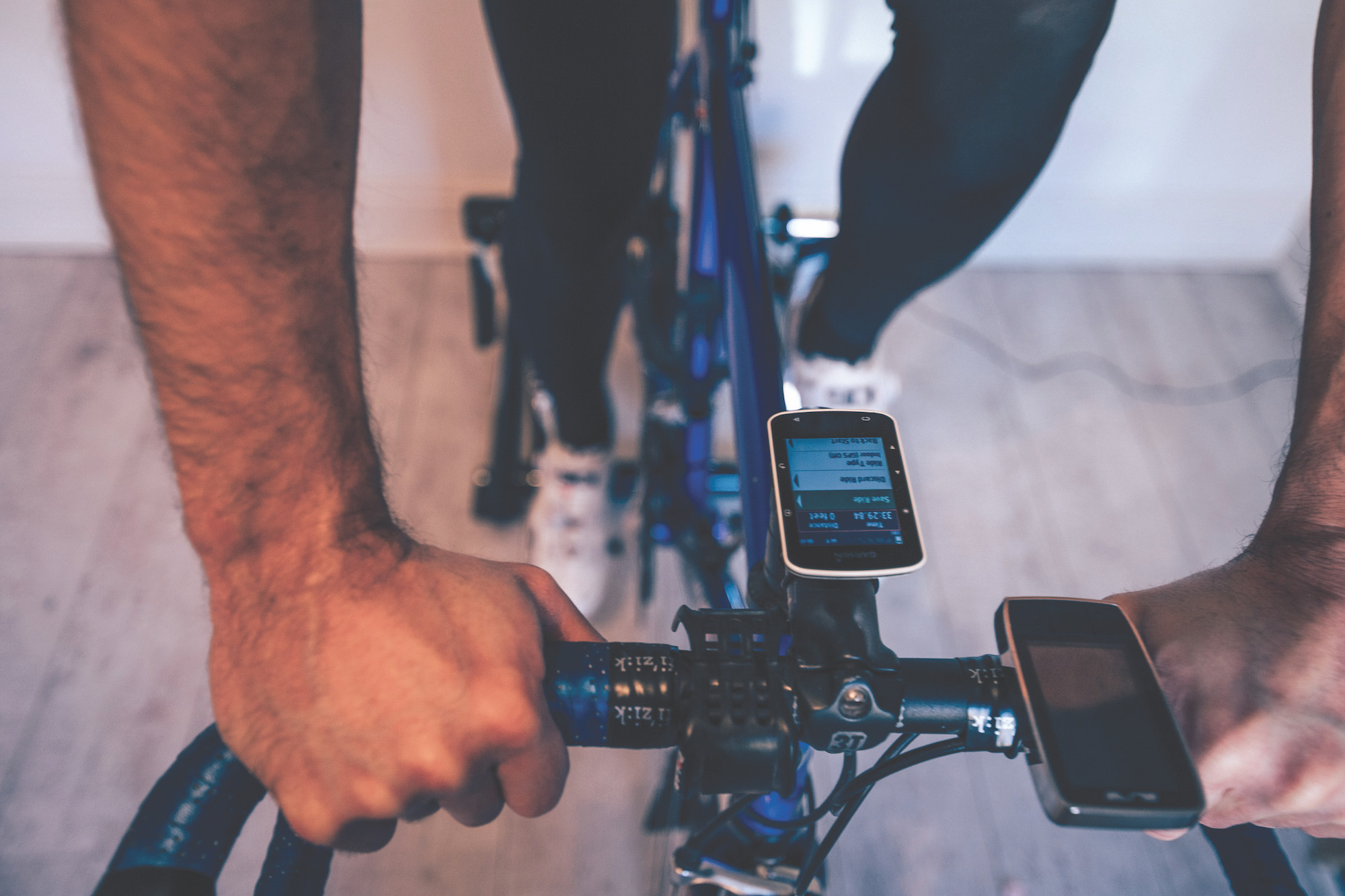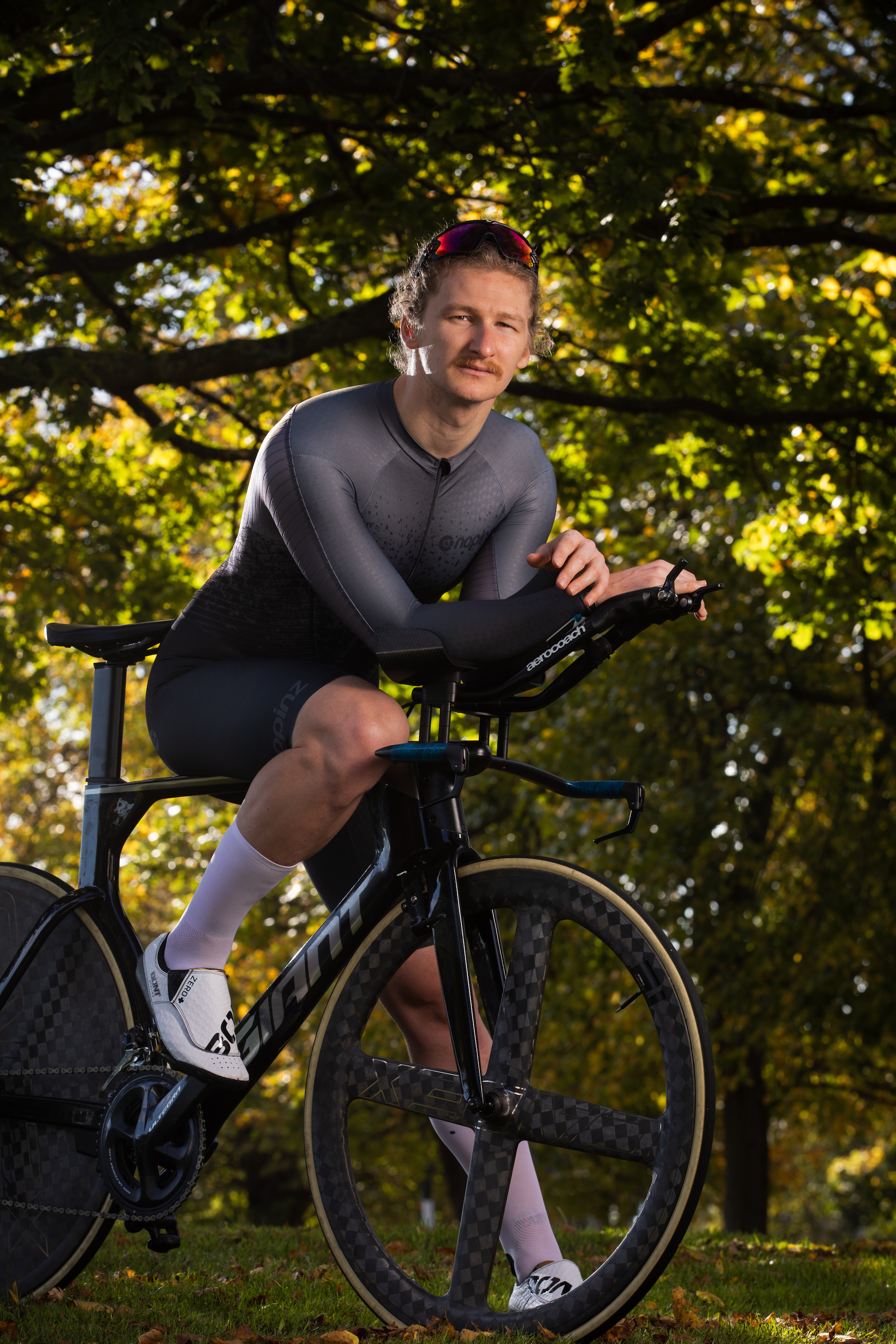We tried four winter workouts to see how well they combat the off-season rut
Alex Ballinger goes in search of some fun, fit-strong antidotes for an off-season programme


As winter loomed once more, I found myself battling with those familiar questions many cyclists face in the darker months. Is it time to hibernate the summer bike? Should I put on some winter tyres? Will the rain ever stop? Faced with the annual prospect of fewer miles, waning form and less fun, this winter, I decided, must not be a repeat of my regular cycle.
This time, I would find the perfect solution to keep myself happy and motivated until the warmer weather finally returned next year. It set me off on an unexpected journey out into the woods, to secluded warehouse gyms and on occasion into extreme discomfort in the, um, comfort of my own living room.
But what is the best extra-curricular training activity for the winter months? To find out, I went indoors, outdoors, online, and off-road in search of a few additional watts and (arguably) some fun along the way.
Cyclocross - CW rating 9/10

Pros: Fun, intense workout, competitive, addictive
Cons: A lot of washing, mechanicals, addictive
First up on the list was cyclocross — a discipline I had once written off as a ‘square peg in a round hole’. Skinny tyres and race bikes slip and sliding around local parks in the winter months — why not just ride mountain bikes? But after watching the undeniable rise in popularity of CX, I decided to dip my toe into the muddy and Baltic waters of off-road racing.
The latest race content, interviews, features, reviews and expert buying guides, direct to your inbox!
Race one: round five of the Wessex League at Popham Airfield, in Hampshire, a fast and luckily dry course — and a steep learning curve. As a first-timer, I wasn’t given a place on the grid, so I started a long way back as racing got underway on a grey, mild day in a field just off the A303 near Basingstoke. From the start whistle, I found myself in a world of hurt as my heart rate jumped to almost 190 beats per minute (near my absolute max) in the sprint for the first corner.
After losing places in the melee, I found my rhythm as the minutes slowly ticked by, pulling back a few places until the race settled and I found myself looking at a very lonely remaining 30 minutes — men’s senior CX races are an hour long, with the officials deciding how many laps will be raced based on the opening lap time to get as close to 60 minutes as possible. My heart rate levelled out at 181bpm as I battled against grass and gravity to keep the bike upright — and I quickly found a new winter love.
“It’s the best sport in the world,” says Helen Wyman, the recently retired former British cyclocross champion, now a CX coach and commentator for Red Bull TV. “The sense of camaraderie and friendship from cross racing is just brilliant.”
But what improvements can you expect to see over the winter?
“Cross is really good for skills,” Wyman adds. “It’s really good to develop skills that you don’t necessarily have. It gives you strength as well. It’s natural intervals, I would race to average 195bpm heart rate, which means I’d be racing at 193bpm the whole time and doing efforts from there. It’s usually really hard to get those intervals during the winter because you just get cold, whereas in cross, you never get cold.” Cross is fun and friendly, and I definitely never got cold.
I did notice a few drawbacks. I’d been warned about the danger cross can pose to your drivechain, and in my third race I learned the hard way. Around 50 minutes into a muddy day at Sparsholt College near Winchester, the claggy mud became too much for the rear mech, resulting in a snapped derailleur hanger, a snapped spoke and a bent chain — an expensive fix, especially when I snapped another derailleur hanger and needed a replacement mech two weeks later.
Be warned: cross is addictive. The sketchy, technical racing and the unparalleled workouts, all kept me coming back for more — and my FTP even jumped by three watts after just three races. Training can also be a simple proposition. Here are a few tips from Wyman: head go to your local park and set up a little circuit that’s around two minutes long with lots of little corners, and go full-gas. You can also ride ‘crop circles’, which is riding in circles as tightly as possible to learn the grip. You can also practise mounting and dismounting the bike and hopping over barriers, all within an hour session.
Wyman also offered up a few essential bits of kit if you want to break into cyclocross: a good working CX bike, two sets of clincher tyres (for intermediate and mud conditions) and perhaps most importantly, a good functioning washing machine.
Gym - CW rating 7/10

Pros: Warm and indoors, no need to buy equipment, huge improvements available
Cons: Fixed indoor location, extra expense, risk of injury
There is one training discipline that our experts were united behind: hitting the weights in the gym. Strength training is often looked down on by cycling’s hardcore because it’s so removed from the joys of spinning the legs in the great outdoors, but unfortunately for those purists, the results are proven.
Former US points race national champion and pro coach Mac Cassin puts gym work high on the list of winter activities for all cyclists.
“Cycling’s really good for you in a lot of ways, but it’s really bad for you in a lot of other ways and the main one is decreased bone density,” he says. “Strength training directly improves performance on the bike, and also has all these great injury-preventative aspects that can give you more longevity on the bike as well as overall health. It’s really good for bone density, ligament strength, and it’s going to make sure that when you’re 50 you’re not perpetually hunched over in a narrow position with brittle bones.”
With riding as your main focus, you can tailor sessions around legs and core work, very quickly seeing the improvements on the bike (after the DOMS has worn off).
It can be easy to wander into a gym without any clear idea of what exercises or weights you should be focusing on to really improve on the bike. The British Cycling website has a few tricks and tips on strength training for cyclists, but getting lost in maze of equipment can result in haphazard lifting and limited progress. Getting some professional advice for gym work is highly recommended to get the most out of your membership.
Gym memberships can set you back a fair amount each month, while the fixed location means you need to fold it into your daily routine. Choosing a gym near your work is a simple trick I’ve always relied on.
But what bonuses can you expect from a winter in the gym?
“For a lot of people, muscular endurance is increased,” says Cassin. “It really helps improve muscular endurance so that when you do get to the end of a longer ride or race, you, your legs, your muscles are actually less fatigued.
“Any sort of strength training also usually has core work incorporated into it. Better core and hip stability means better power transfer — you’re going to be more comfortable on the bike. So if you normally get sore shoulders or sore lower back towards the end of harder days in the saddle, that’s something that can be addressed with strength work.”
But make sure you’re patient with your development — cyclists have a lot of strength that can be used for ungainly ends if your form in the gym isn’t right. Start light, let your body adjust to the new work, and make sure you’re not delaying your season start with a nasty injury.
Running - CW rating 7/10

Pros: Simple, quick, less weather dependent, time-efficient
Cons: Risk of injury, delayed onset muscle soreness (DOMS), nowhere near as much fun
Next up on the list of winter alternatives is possibly every cyclist's least favourite alt training: running. Unfortunately, running is one of the quickest and most convenient ways of holding and gaining strength in the winter months. It’s just not as much fun as riding your bike. The beauty of running is its simplicity — you need very little kit, little time, and there’s a lot less that can go wrong. Just pull on your shoes and you’re away for a calorie-consuming jaunt.
I asked the experts what gains to expect, and got a word of warning from Cassin: “Cyclists have great muscular and aerobic fitness, but it’s so cycling-specific. You can get really fit cyclists who could probably just put some shoes on and go and run a half-marathon without any actual prep. The problem is, they won’t be able to walk for a week after.
“It’s a really good workout but you need to be really patient with it and take a gradual progression. If it’s someone who hasn’t been running it all, we start them off at just a five-minute easy jog on a treadmill, and then just bump that up a couple minutes every day until you’re getting up to 30-ish minutes, then you can start increasing the intensity.”
The temptation to get out the door and run full-gas for 20 minutes can be overwhelming, but when your legs are screaming at you for the next three days, you’re definitely going to regret it. The dreaded delayed-onset muscle soreness is a real and present danger when it comes to running. That said, if you can break through that initial barrier, running can be a huge performance-booster by improving your muscular endurance. Plus, with ease of access to free and cheap events like Parkrun and local cross-country leagues, there are plenty of opportunities to test your progress.
Indoor training - CW rating 8/10

Pros: Time-efficient, weather no factor, zero risk of crashing, easy to structure, lots of intensity options
Cons: Boring, initial and on-going cost, few skills learnt
The turbo trainer has been the proven alterative for pros and amateurs alike for decades, but things have stepped up in recent years with the introduction of smart technology and online training platforms like Zwift and The Sufferfest. I jumped into the labyrinth of online training apps with my Elite Direto trainer (£600) earlier this year and have been unable to escape since.
The Sufferfest offers workouts accompanied by racing footage from the pro peloton, horizon-broadening features like yoga and mental strength, as well as their own unique fitness test, the 4DP.
In his role as senior physiologist for The Sufferfest, Cassin advises: “Doing indoor sessions over the winter is just a really time efficient way to get quality training in. People get freaked out about doing high intensity over the winter, because they’re afraid they’re going to get burnt out by summertime. That can be true if you’re not dosing things out correctly.
“Training is by definition a stress on your body and to make adaptations, that needs to be a novel stress, it needs to be something new that your body hasn’t necessarily handled and then that’s how you make those improvements.”
Cassin recommends ‘reverse periodisation’ where a rider starts the winter with a focus on intense VO2 and anaerobic capacity training sessions, before shifting towards higher volume as the weather improves.
Challenging the conventional thinking around winter miles, Cassin adds: “Many people say you need to improve your base over winter so you have this big foundation that you then stack these other pieces on top of. With reverse periodisation, if you’re looking at doing endurance rides or threshold efforts, all of that is capped by your aerobic ceiling, that’s your VO2 max.
“If you come out of the winter with all those upper ceilings still pretty high, then when you get into endurance work, tempo work, threshold work, you’re going to be able to progress [from] a higher level.”
Alongside its extensive choice of structured workouts to raise those ceilings, The Sufferfest also offers its own extensive fitness metric, 4DP. The Four-Dimension Power profile gives you four key power numbers and even tells you what kind of riding is your strongest after an hour-long (and very brutal) test. By testing short sprints, five-minute power, 20-minute best and one-minute sustained effort, The Sufferfest told me my strength was a five-minute blast, perfect for track pursuiting, while my weakness is my threshold.
There are still drawbacks to indoor training, of course, the biggest of which is the monotony. Setting up your smart-trainer and pouring sweat over your living room for an ultra-intense workout in front of a screen can get pretty tedious, even while telling yourself ‘it’ll be worth it next summer’.
There are also the costs of indoor training — a few hundred quid for a smart-trainer might not be at the top of the family priority list, while subscription to The Sufferfest costs around £10 a month, Zwift around £11. But for measurable improvements in the quieter months, these may be a worthwhile investment.
Tips from the pros
“Go for a hike” - Lizzie Deignan (Trek–Segafredo)
“I love hiking. My husband and I went to the Lake District for a weekend. I just like the ability to be able to walk, because when we’re cycling, we avoid it at all costs. If you’re putting in a bit of effort, it’s good exercise — and less injury risk than running.”
“Run! — but take it slowly” - Pavel Sivakov (Team Ineos)
“I go for some runs, but you have to be careful and take it very slowly. I got injured years ago when I had just signed with Team Sky. It was a nightmare. I don’t want to put on muscle, so I don’t really go to the gym, only core workouts.”
“Rest and play” - Giulio Ciccone (Trek–Segafredo)
“I like to run, play tennis, and do nothing — that’s my alternative sport!”
This feature originally appeared in the print edition of Cycling Weekly, on sale in newsagents and supermarkets, priced £3.25.
Alex Ballinger is editor of BikeBiz magazine, the leading publication for the UK cycle industry, and is the former digital news editor for CyclingWeekly.com. After gaining experience in local newsrooms, national newspapers and in digital journalism, Alex found his calling in cycling, first as a reporter, then as news editor responsible for Cycling Weekly's online news output, and now as the editor of BikeBiz. Since pro cycling first captured his heart during the 2010 Tour de France (specifically the Contador-Schleck battle) Alex covered three Tours de France, multiple editions of the Tour of Britain, and the World Championships, while both writing and video presenting for Cycling Weekly. He also specialises in fitness writing, often throwing himself into the deep end to help readers improve their own power numbers. Away from the desk, Alex can be found racing time trials, riding BMX and mountain bikes, or exploring off-road on his gravel bike. He’s also an avid gamer, and can usually be found buried in an eclectic selection of books.
